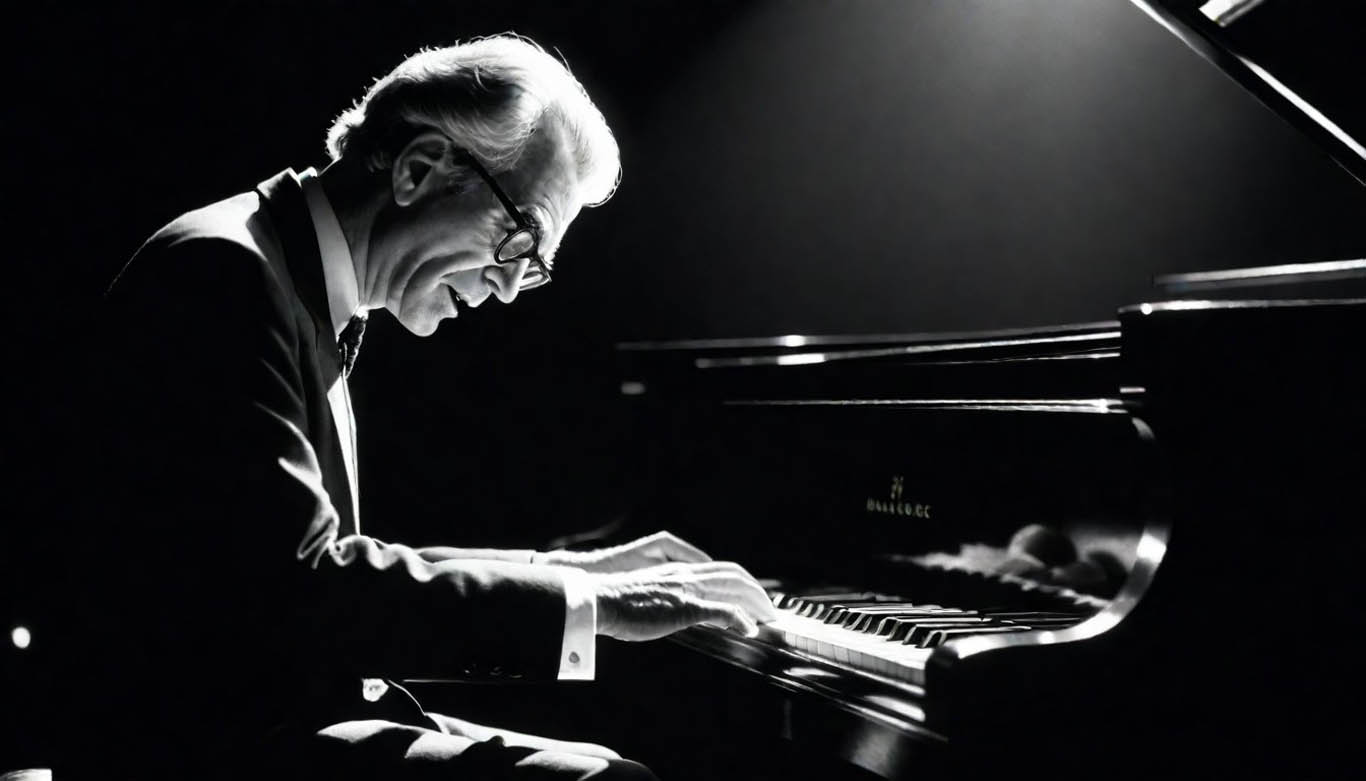Dave Brubeck

Dave Brubeck, a pioneering jazz pianist and composer, revolutionized the genre with his innovative rhythms, unconventional time signatures, and adventurous compositions. Here's a concise profile capturing the essence of his influential career:
Early Life and Musical Beginnings
Dave Brubeck was born on December 6, 1920, in Concord, California. He showed an early interest in music and began studying piano at a young age. Brubeck's early influences included jazz legends like Duke Ellington and Count Basie, as well as classical composers like Johann Sebastian Bach and Claude Debussy.
1940s – 1950s
Dave formed The Dave Brubeck Octet with Milhaud students Bill Smith, Dick and Bob Collins, Jack Weeks, and David van Kriedt, as well as San Francisco musicians Cal Tjader and Paul Desmond.
The Dave Brubeck Trio recorded their first records with Jack Sheedy and San Fransisco-based Coronet Records. The company later became Fantasy Records under the ownership of Max and Sol Weiss, and continued to record and issue the music of the Trio.
In the 1950s, Dave Brubeck rose to prominence with the Dave Brubeck Quartet, which he formed with alto saxophonist Paul Desmond, bassist Eugene Wright, and drummer Joe Morello. The quartet's innovative approach to jazz, characterized by complex rhythms, unusual time signatures, and adventurous improvisation, earned them widespread acclaim and commercial success.
Brubeck organized the Dave Brubeck Quartet in 1951. They took up a long residency at San Francisco’s Black Hawk nightclub and gained great popularity touring college campuses, recording a series of albums with such titles as Jazz at Oberlin (1953), Jazz at the College of the Pacific (1953), and Brubeck’s debut on Columbia Records, Jazz Goes to College (1954).
Brubeck's breakthrough came in 1959 with the release of the album "Time Out," which featured the iconic composition "Take Five." The album's use of unconventional time signatures, including the groundbreaking 5/4 meter of "Take Five," captured the imagination of listeners and became one of the best-selling jazz albums of all time.
“Time Out” was recorded and released, named for its odd time signatures in songs such as “Take Five” and “Blue Rondo a la Turk.” It became the first jazz album to sell more than a million copies.
1970s-1980s
Throughout the 1970s and 1980s, Dave Brubeck continued to record and perform prolifically, exploring a wide range of musical styles and collaborations. He released albums such as "Brubeck Plays Brubeck" (1976) and "Paper Moon" (1982), which showcased his versatility as a pianist and composer.
Brubeck's collaborations with artists like Gerry Mulligan, Stan Getz, and Jimmy Rushing further solidified his reputation as a leading figure in the jazz world. His adventurous spirit and willingness to experiment with different musical genres and influences endeared him to audiences around the world.
Legacy and Influence
Dave Brubeck's impact on the jazz genre is immeasurable. His innovative rhythms, unconventional time signatures, and adventurous compositions have inspired generations of musicians and left an indelible mark on the history of jazz music.
"Take Five," with its iconic melody and groundbreaking use of 5/4 time, remains one of the most recognizable and beloved jazz compositions of all time. Brubeck's influence extends far beyond his own recordings, as he continues to inspire new generations of musicians with his fearless approach to improvisation and composition.
Dave Brubeck's legacy as a pioneering jazz musician and composer endures, his innovative spirit and adventurous compositions continuing to inspire and influence musicians around the world.
to download my version click here
Dave Brubeck ratings

Songs: Take Five, Blue Rondo a la Turk